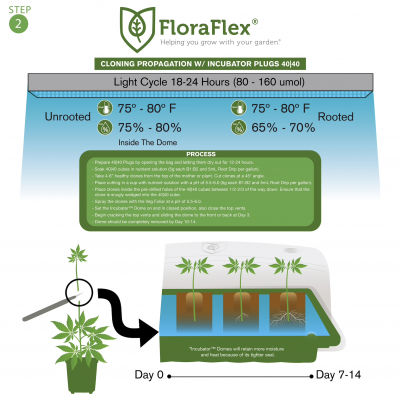Humidity directly affects the transpiration process in cannabis plants, which is the movement of water from the roots to the leaves and its subsequent release through stomata. Proper humidity levels influence the rate of transpiration, which in turn affects the plant's water uptake, nutrient absorption, and overall growth.
Maintaining the right humidity levels also plays a critical role in preventing the development of mold, mildew, and other fungal diseases. Cannabis plants are susceptible to such issues, especially in high humidity environments, which can significantly impact plant health and yield.
Ideal Humidity Levels for Cannabis Cultivation
The ideal humidity levels for cannabis cultivation vary depending on the stage of growth. Here are the recommended ranges:
-
Vegetative Stage: During the vegetative stage, when the plants are focusing on foliage development, aim for a humidity range between 40% and 70%. This range provides sufficient moisture for healthy growth without excessive moisture that could lead to mold or mildew.
-
Flowering Stage: As the plants enter the flowering stage, it is beneficial to gradually decrease humidity levels. Maintain a humidity range of 40% to 50% during this stage to minimize the risk of bud rot and other fungal issues.
Tips for Controlling Humidity in the Cultivation Environment
Controlling humidity levels in the cultivation environment is essential for maintaining optimal conditions for cannabis plants. Consider the following tips:
-
Ventilation: Proper ventilation is crucial for managing humidity levels. Ensure that your cultivation space has adequate air circulation, which helps remove excess moisture and maintain a healthy environment.
-
Dehumidifiers: In high humidity environments, using dehumidifiers can effectively reduce moisture levels. Place dehumidifiers strategically to target areas with high humidity, ensuring that the overall humidity stays within the desired range.
-
Air Conditioning: In some cases, using air conditioning can help control both temperature and humidity. Air conditioning units with humidity control settings allow precise adjustment of the cultivation environment.
-
Monitoring and Adjusting: Regularly monitor humidity levels using a hygrometer or digital humidity monitor. If humidity levels deviate from the desired range, take appropriate measures to adjust the environment, such as adjusting ventilation, using dehumidifiers, or adding humidifiers if humidity is too low.
-
Proper Watering Practices: Overwatering can contribute to high humidity levels. Be mindful of watering practices, allowing the soil to dry out slightly between waterings to prevent excess moisture in the cultivation space.
By implementing these tips and maintaining appropriate humidity levels throughout the different stages of cannabis growth, you can provide an optimal environment for healthy plant development and maximize your overall yield potential.
















